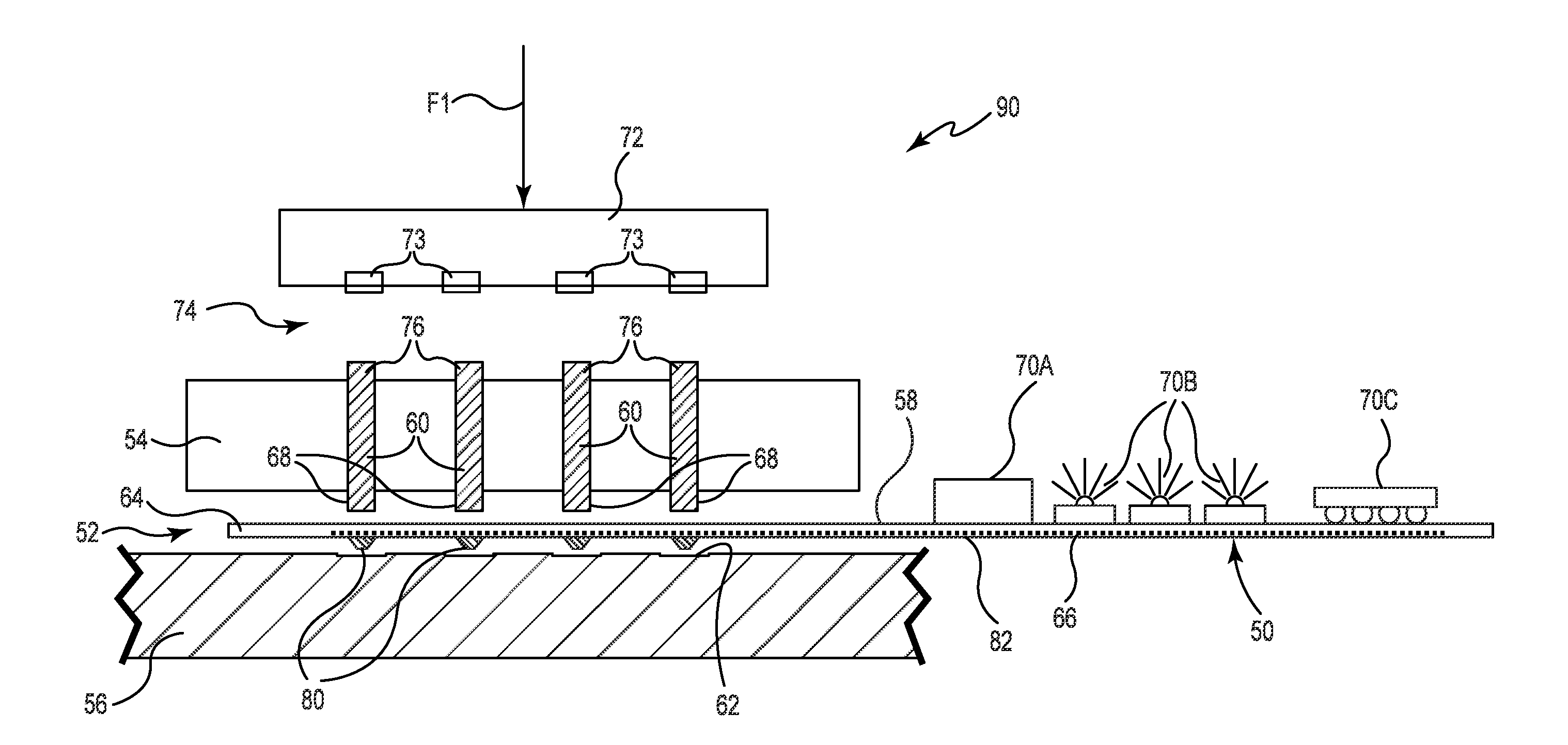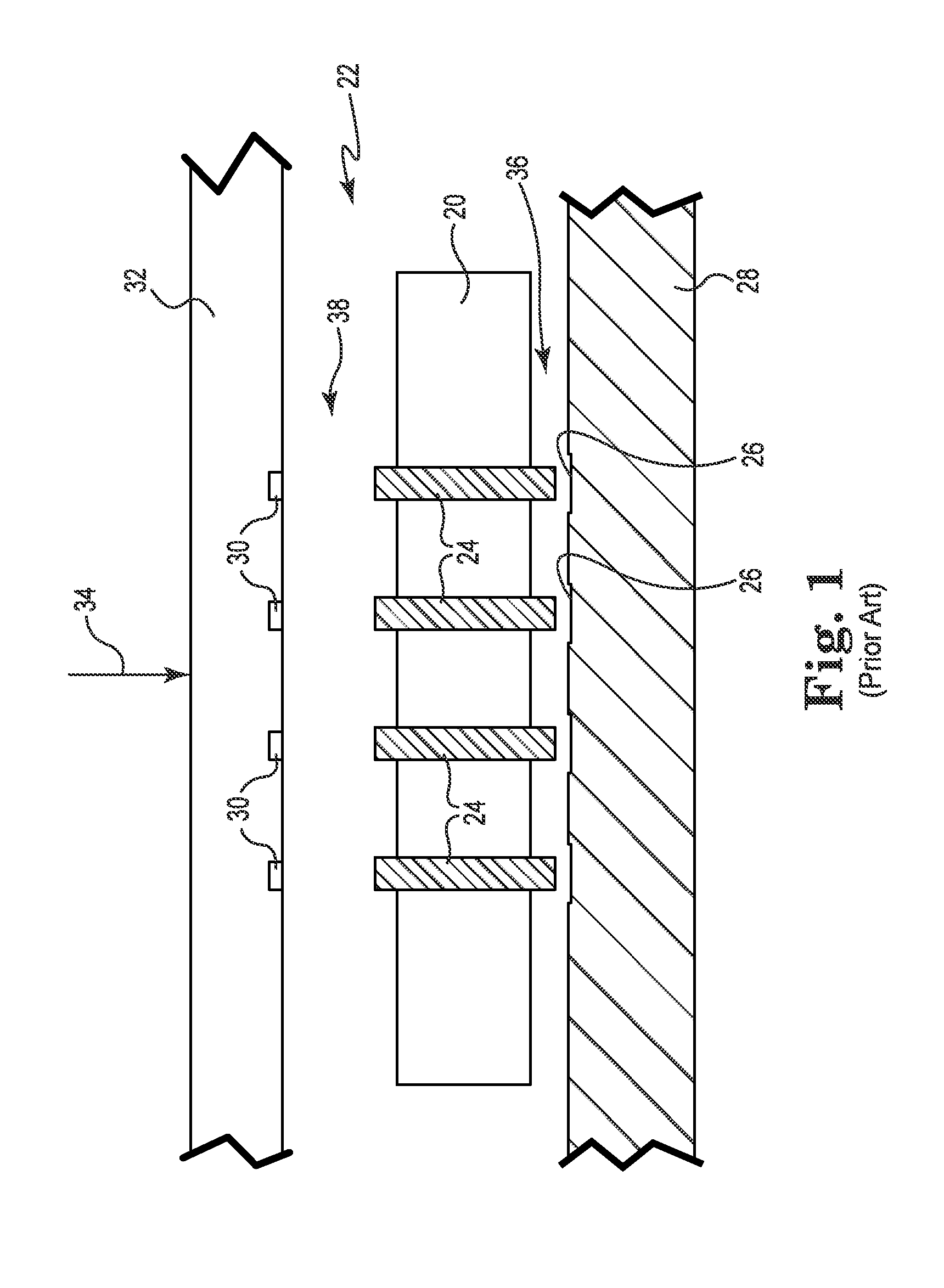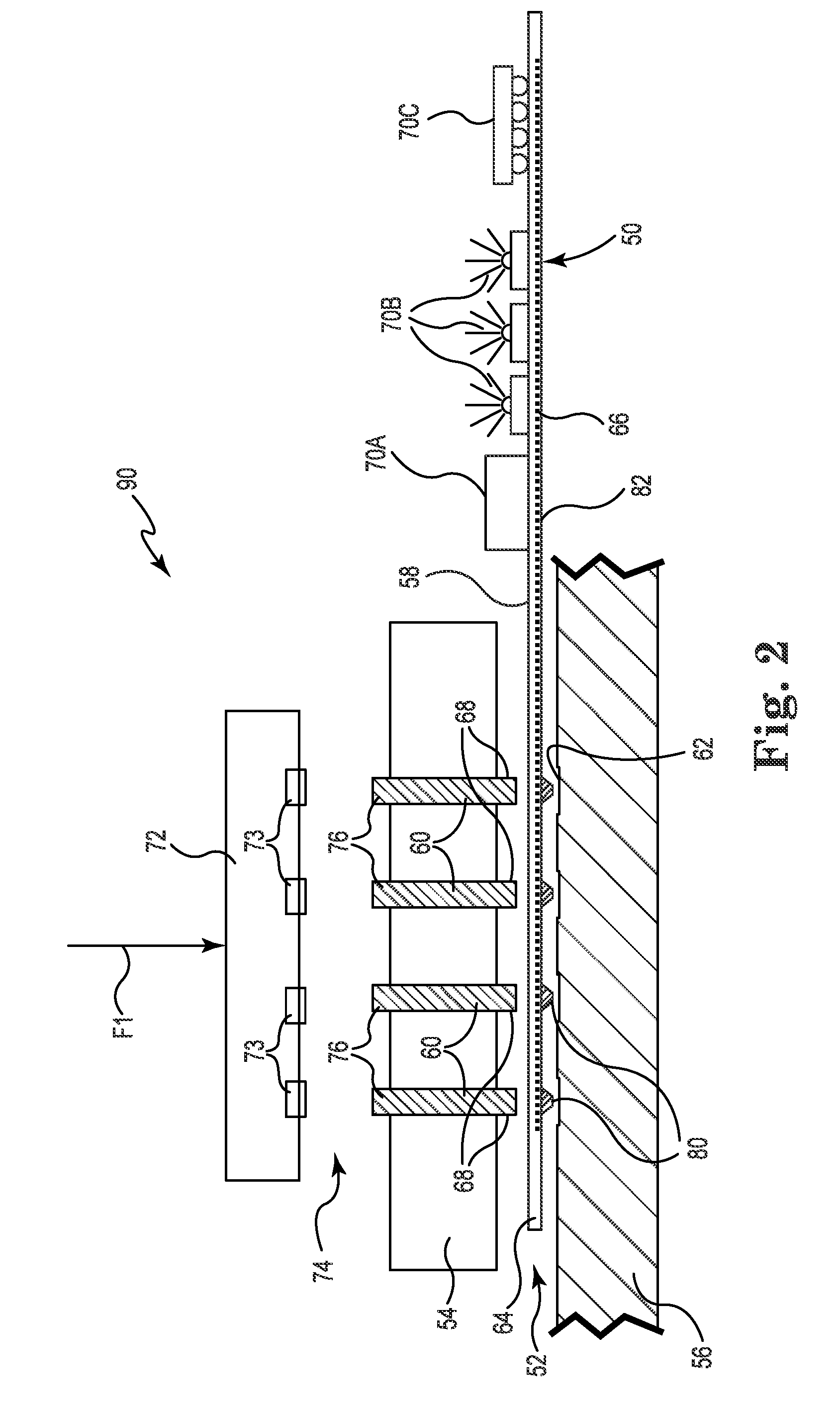[0011]Printing processes permit compliant printed circuits and electrical devices of
diagnostic tools to be produced by a
direct writing method based upon images, without the need for artwork, lengthy lead-times for
circuit design and production, and subtractive circuit techniques. The present
diagnostic tools can be simple or complex, and can be produced in minutes. The
diagnostic tools can also be adapted as needed to accommodate additional diagnostic functions or tests. The additive nature of many printing processes, such as for example the
inkjet printing process, can also provide an excellent avenue to directly print many electrical functions such as passive components, transistors, display function or adaptive intelligence. Revisions can be accomplished in moments by altering the image files and reprinting the diagnostic tool. By contrast, revisions to the tools formed using traditional methods, may take weeks.
[0012]A diagnostic tool according to the present disclosure can be as simple as a
daisy chain to verify continuity, or as complex as
functional testing directly on the compliant printed circuit. Positioning
functional testing on the present diagnostic tool dramatically increases the value to the user, without the need to connect to external systems or testing analyzers. The diagnostic tools can be printed with simple low-cost or low-speed circuitry, or the circuitry can be printed with
high frequency capability in the event an external measurement tool is connected.
[0013]The cost to produce a diagnostic tool in accordance with the present invention is a fraction of the cost of a conventional tool. A tool produced with conventional methods might cost $10,000 to $20,000 to design and produce, typically with a 4-6 week lead-time. A diagnostic tool according to the present disclosure can be produced in minutes for a fraction of the cost. The ability to modify the design or correct errors which would cause the $20,000 investment to be wasted, and
reprint easily at little additional cost, offers tremendous improvements over conventional methods. Image libraries and design rules can be created to semi-automate the
design process and dramatically reduce
engineering time with tremendous flexibility to make changes substantially
on the fly during the testing process.
[0014]The use of additive printing processes can permit the material set in a given layer to vary. Traditional PCB and circuit fabrication methods take sheets of material and stack them up, laminate, and / or
drill. The materials in each layer are limited to the materials in a particular sheet. Additive printing technologies permit a wide variety of materials to be applied on a layer with a registration relative to the features of the previous layer. Selective addition of conductive, non-conductive, or semi-
conductive materials at precise locations to create a desired effect has the major advantages in tuning impedance or adding electrical function on a given layer. Tuning performance on a layer by layer basis relative to the previous layer greatly enhances
electrical performance.
[0015]The compliant printed circuit can be processed to add functions and electrical enhancements not found in traditional printed circuits. A diagnostic tool according to the present disclosure can be configured with conductive traces that reduce or redistribute the terminal
pitch, without the addition of an
interposer or
daughter substrate. Grounding schemes, shielding, electrical devices, and
power planes can be added to the present diagnostic tools, reducing the number of connections to the PCB and relieving routing constraints while increasing performance.
 Login to View More
Login to View More  Login to View More
Login to View More 


